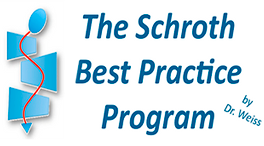Scoliosis / Kyphosis
Juvenile Scoliosis
Juvenile scoliosis, typically diagnosed in children aged 4 to 10, poses significant challenges as studies indicate a higher risk of progression in this population. According to the Scoliosis Research Society (SRS), a 95% of cases may eventually require surgical intervention. Our approach offers families a proactive option during this critical period, in contrast to the prevalent ‘watch and wait’ approach in conventional medical practice.
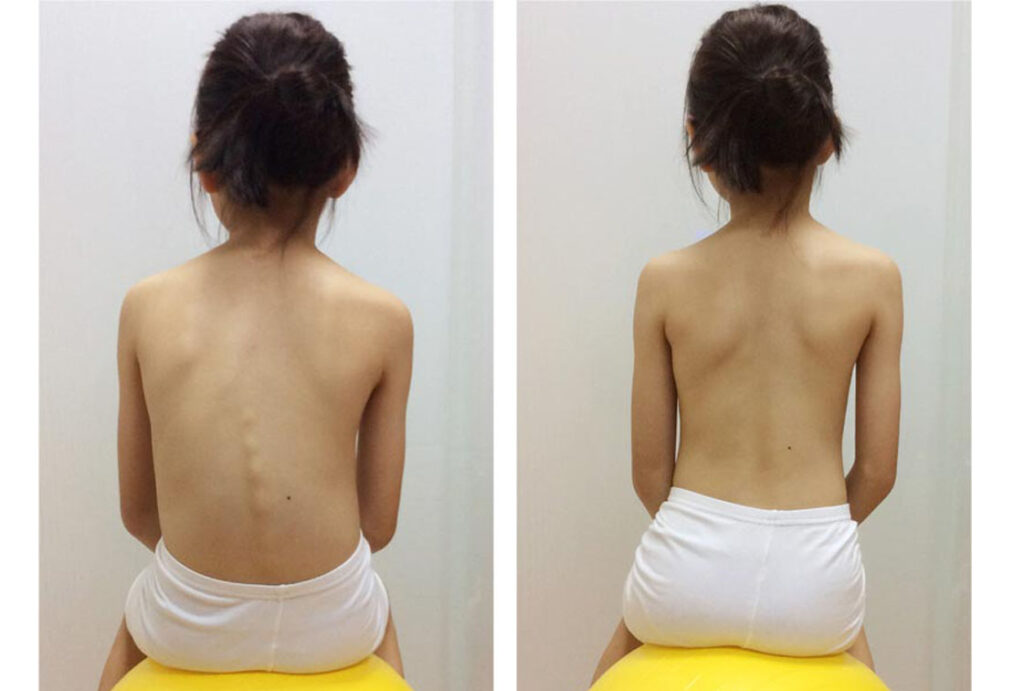
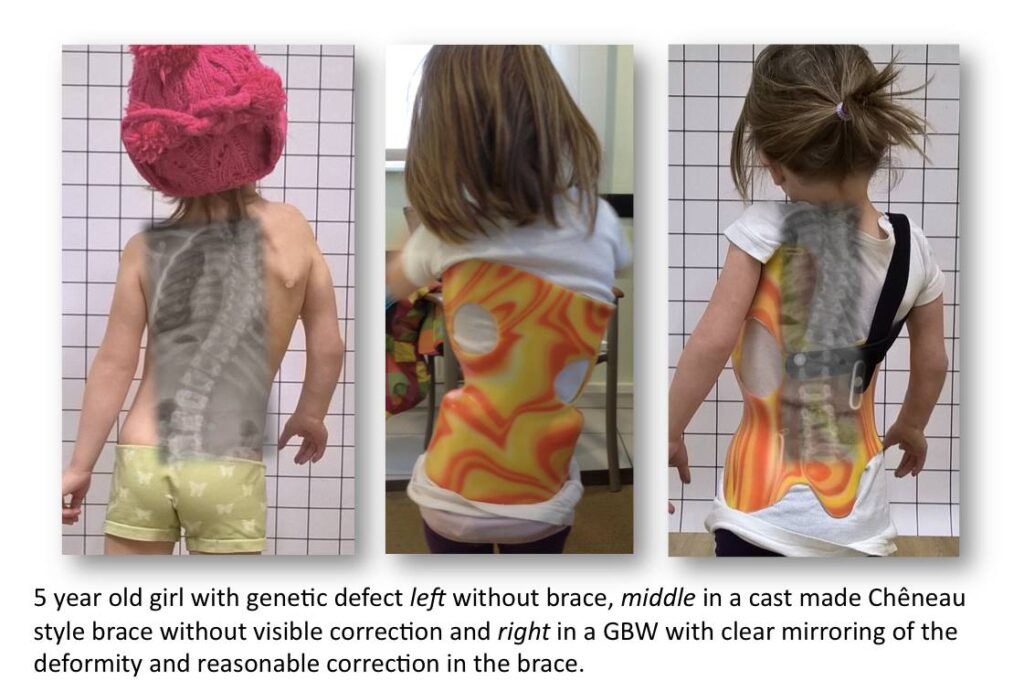
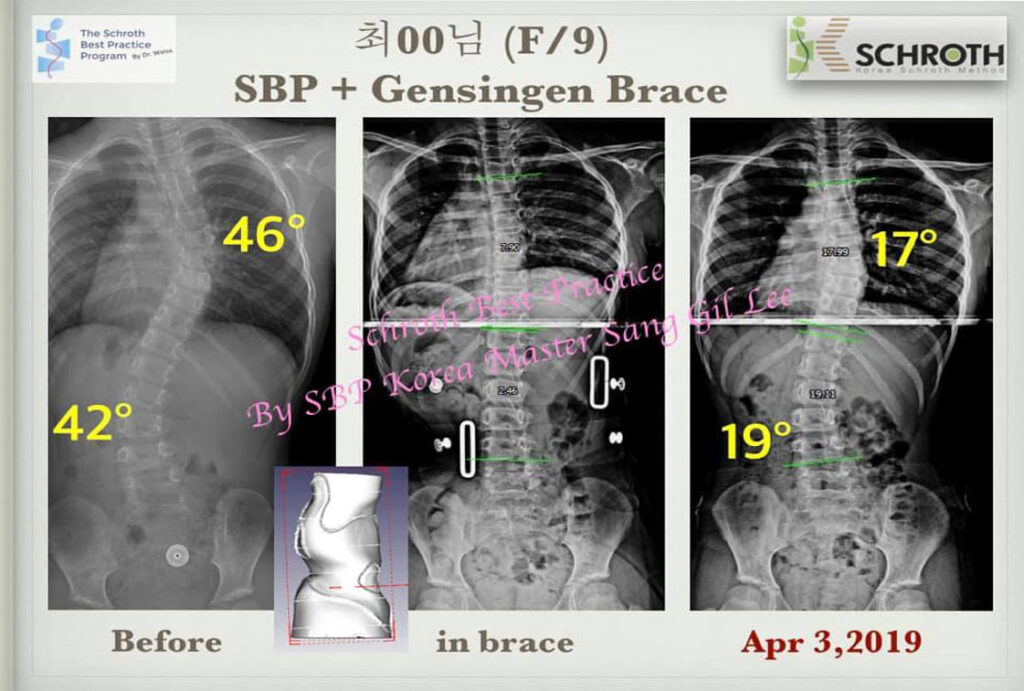
Schroth Method for Juvenile Scoliosis
Our treatment strategy for juvenile scoliosis begins with tailored scoliosis-specific exercises, focusing on simple components of the Schroth program. This may involve teaching daily postural modifications and physiologic exercises for the sagittal plane, which can be easily practiced at home. Additionally, we introduce mobilization exercises suitable for home practice with parental guidance. Our methodology aims to address emerging curves and noticeable spinal asymmetries, such as uneven shoulders or hip prominence.
Tailored Treatment Approach
For some juvenile scoliosis patients, the complete Schroth program may not be suitable initially due to their age and developmental stage. We adapt our approach accordingly, starting with shorter sessions and longer intervals between treatments compared to adolescents.
Progress Monitoring and Adaptation
We closely monitor each child’s progress, adjusting the treatment plan based on the severity of scoliosis and individual factors. As their physical and cognitive abilities evolve, we gradually introduce more advanced Schroth breathing concepts and exercises. At Physio Link, we prioritize creating a positive and enjoyable experience for young patients. Our team ensures that visits are light-hearted and engaging, fostering a sense of ownership over their scoliosis management.
Adolescent Scoliosis
Adolescent scoliosis, characterized by a lateral curvature of the spine, presents unique challenges for both patients and caregivers. At Physio Link, we understand the significance of early intervention and personalized attention in effectively managing this condition. Our holistic approach to adolescent scoliosis care integrates advanced methodologies such as the Schroth Method and innovative bracing options to maximize outcomes and empower patients.
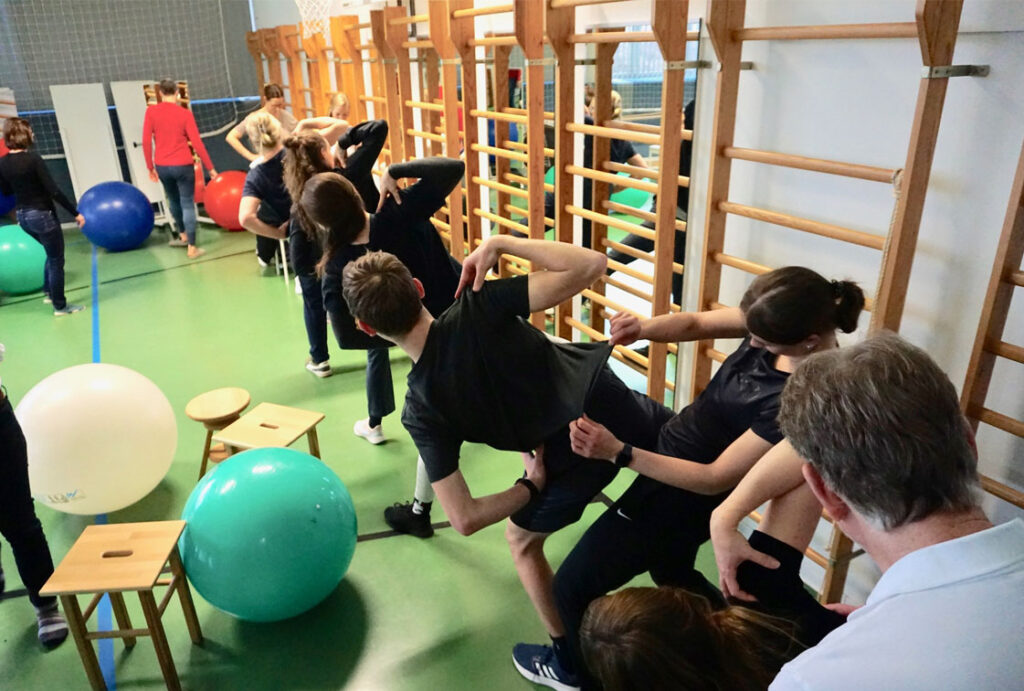
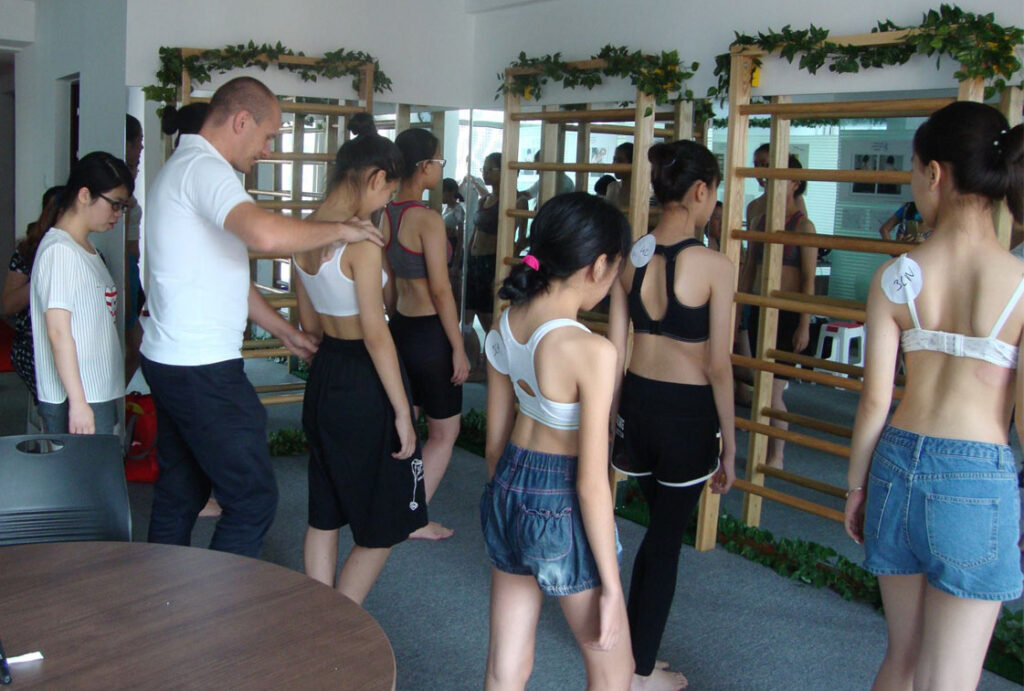
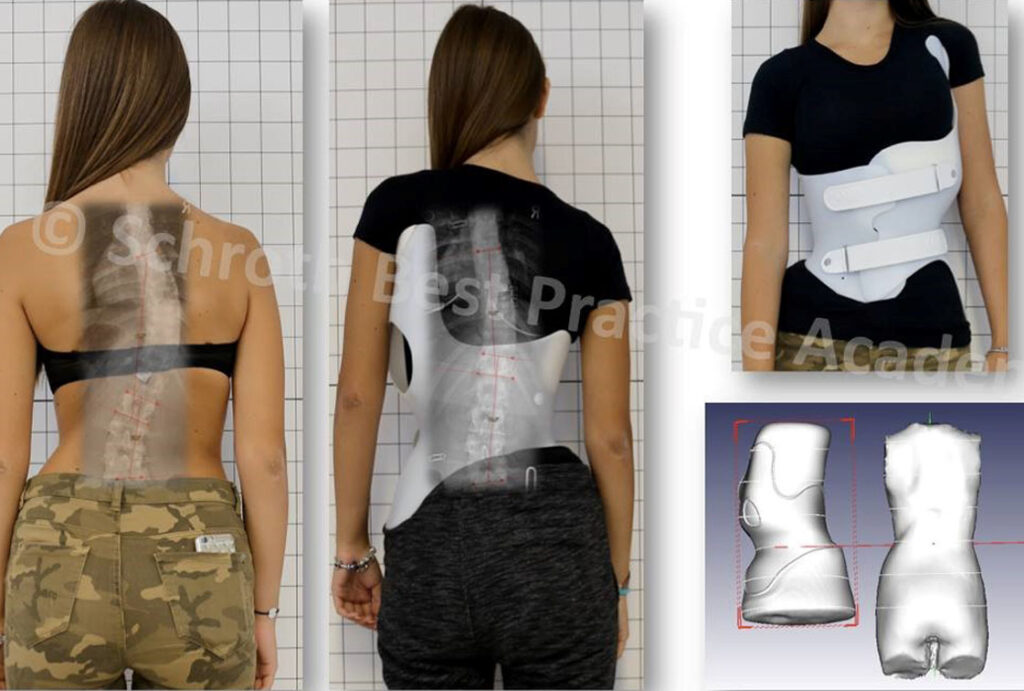
Understanding Adolescent Scoliosis
Adolescent scoliosis typically emerges between ages 10 and 18, with 80% of cases being idiopathic and the remaining 20% attributed to various factors including neuromuscular, congenital, or syndromic origins. Timely detection through screenings and clinical assessments is paramount for prompt intervention.
Beyond the Cobb Angle
While the Cobb angle serves as a crucial metric for evaluating scoliosis severity, it’s essential to recognize the condition’s multidimensional nature. At Physio Link, we address not only frontal plane deviations but also sagittal and transverse plane asymmetries to arrest progression and foster spinal wellness.
The Schroth Method – A Proactive Approach
We advocate for early intervention utilizing the Schroth Method, a specialized exercise regimen aimed at correcting asymmetrical loading and enhancing spinal stability. Our Schroth Best Practice® (SBP) protocol emphasizes modified daily postures, physiologic exercises, mobilizations, and tailored routines to accommodate individual curvature patterns.
Benefits of the Schroth Method
Through the Schroth Method, adolescents gain strength, flexibility, improved breathing, heightened body awareness, and enhanced posture. By instilling lifelong management skills, we strive to halt curve progression and enhance overall well-being.
Avoiding Surgery through Proactive Care
We encourage proactive management strategies to mitigate the need for surgery, recognizing the associated risks and limitations. Through our non-invasive approach, many patients achieve favourable outcomes without surgery, providing promising alternatives for those navigating adolescent scoliosis challenges
Adult Scoliosis
Adult scoliosis can develop as a continuation of adolescent scoliosis or may arise in adulthood due to factors like disc degeneration and hormonal changes. Degenerative scoliosis in women is often linked to menopause and osteoporosis, leading to physical changes like loss of height, postural alterations, and pain. Staying active can help alleviate symptoms such as pain and muscle imbalances.
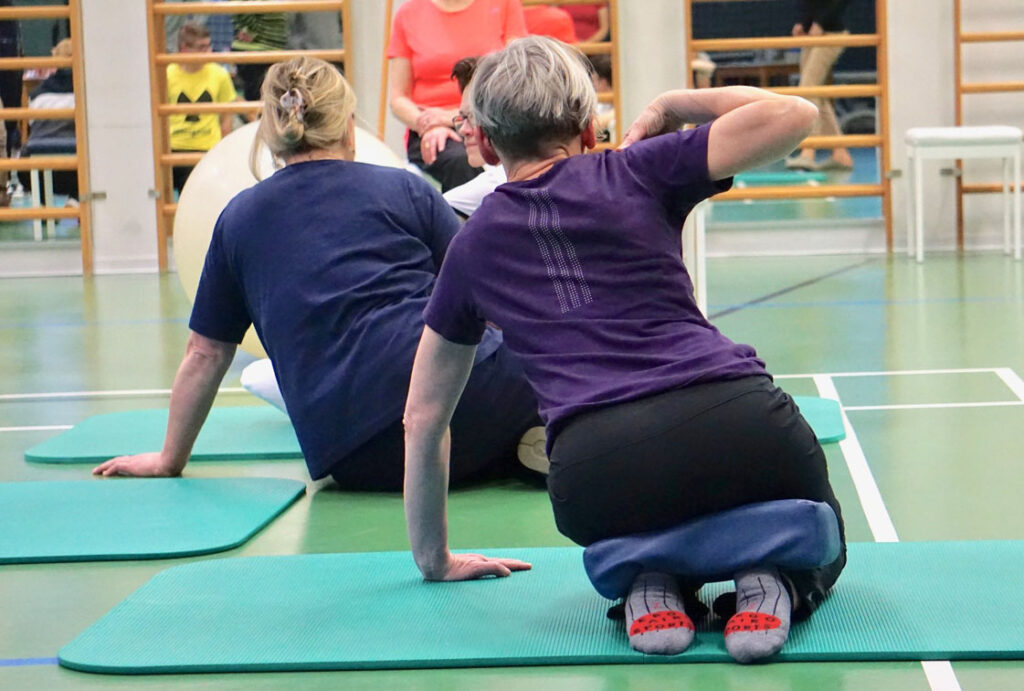
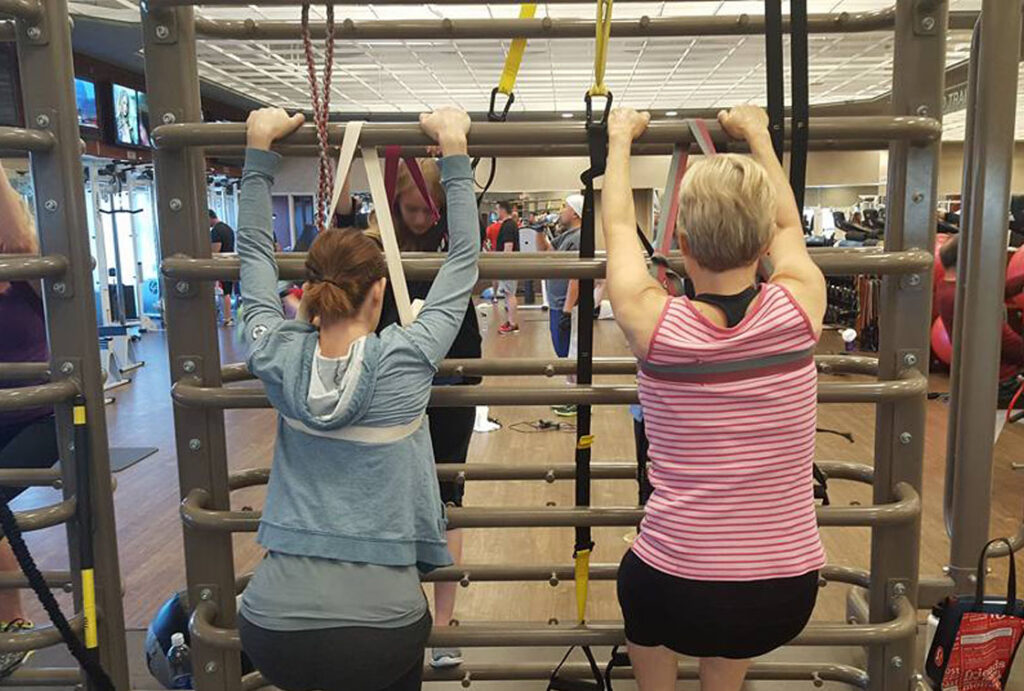
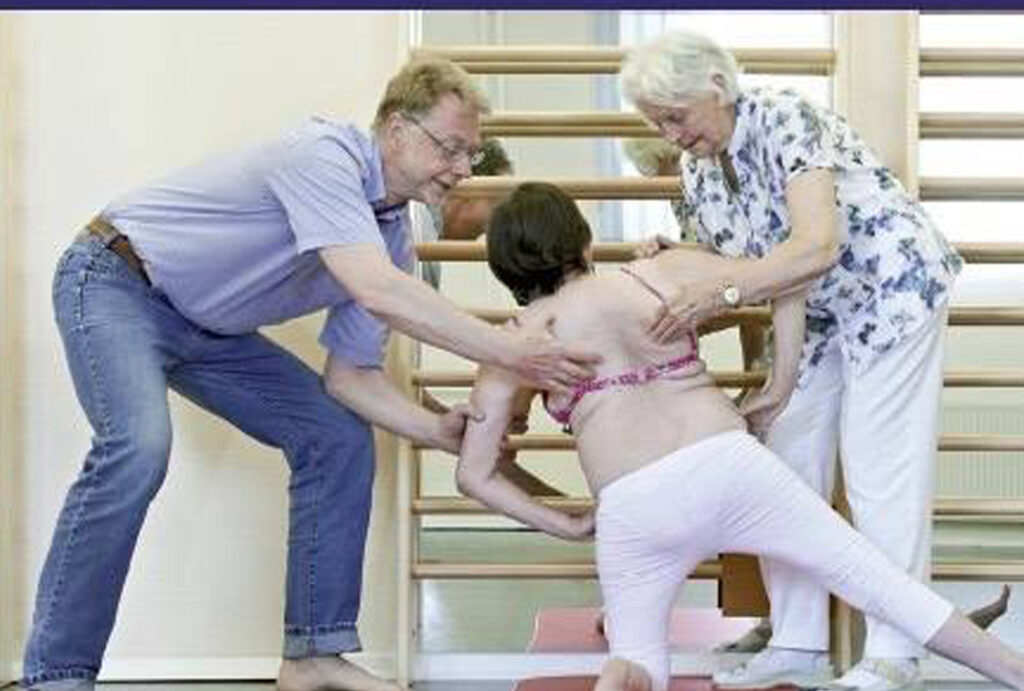

The Schroth Method for Adult Scoliosis
Physio Link offers the Schroth Method for adults with scoliosis, providing scoliosis-specific exercises to help manage the condition. This proactive approach aims to address pain, stop progression, and improve posture, empowering patients to regain control over their scoliosis.
Program Details
Adult patients typically engage in a 12-hour or 17-hour program, tailored to individual needs and circumstances. The program includes ADLs for modifying postures, Physiologic® exercises for sagittal plane improvement, mobilizations to maintain spinal flexibility, and 3D Made Easy exercises for daily integration. Additionally, Power Schroth exercises are incorporated to enhance core strength.
Benefits of the Schroth Method for Adults
The program aims to reduce or eliminate pain, stabilize scoliosis progression, improve spinal flexibility and strength, enhance body awareness, and achieve postural improvement. Patients receive curve-pattern specific spinal education to better understand their unique spine and learn lifelong skills for scoliosis management.
Post-Surgical Scoliosis Treatment
Adolescent scoliosis, characterized by a lateral curvature of the spine, presents unique challenges for both patients and caregivers. At Physio Link, we understand the significance of early intervention and personalized attention in effectively managing this condition. Our holistic approach to adolescent scoliosis care integrates advanced methodologies such as the Schroth Method and innovative bracing options to maximize outcomes and empower patients.
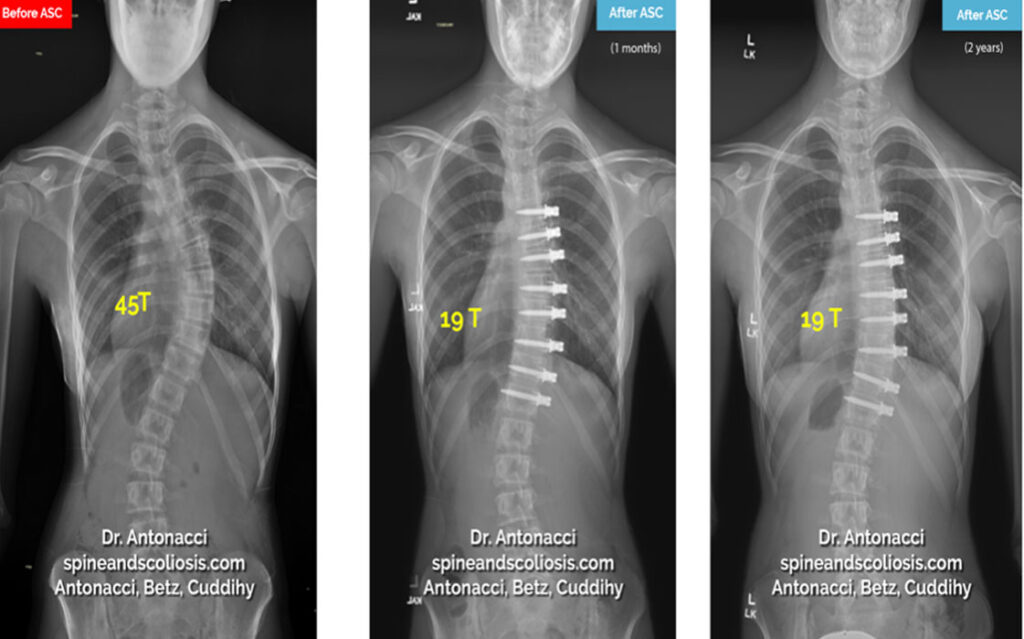
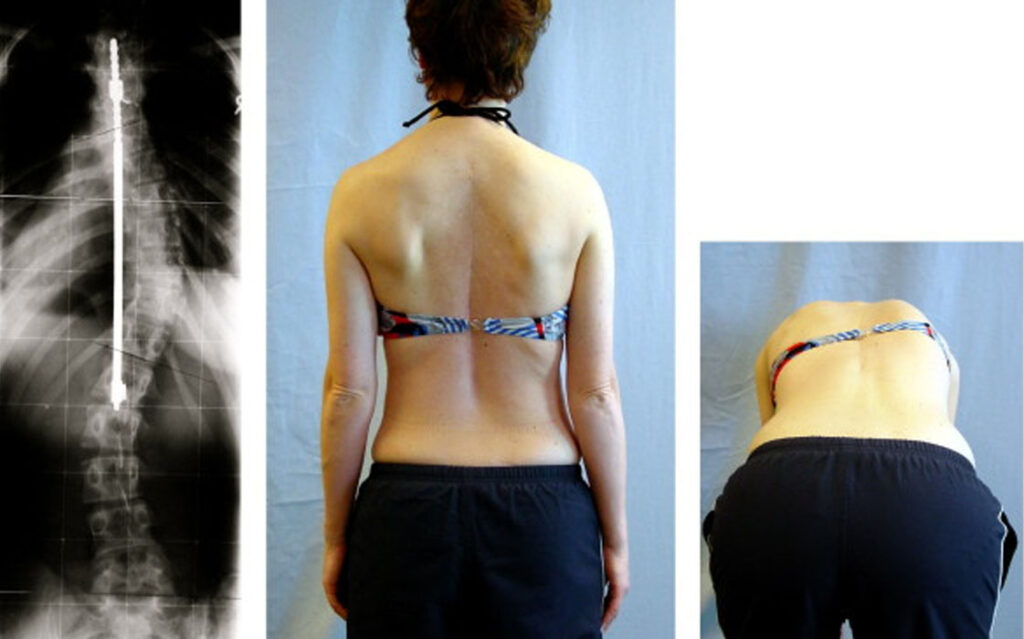
Post-Surgical Scoliosis Treatment for Adolescent Patients
Post-Surgical Scoliosis Treatment for Adult Patients
It’s crucial to acknowledge that scoliosis is a lifelong condition that may necessitate ongoing care even after surgery. Following spinal fusion surgery, complications like buckling above or below fusion sites and increased pain levels can emerge, leading to potential curve progression. In such scenarios, our Schroth program and part-time bracing can be beneficial in managing post-surgical symptoms. To enrol in our program after surgery, patients must be at least 6 months post-operation, with recent x-rays confirming stable hardware. Clearance from an orthopaedic surgeon may also be necessary.
Yes, we do provide treatment for post-surgical adult patients! The primary requirement is being at least 6 months post-surgery, with recent x-rays showing stable hardware. Permission from your orthopaedic surgeon is essential before beginning our program. Typically, post-surgical patients are recommended for a 12-hour program tailored to their needs.
Patients experiencing pain after scoliosis surgery often seek post-operative treatment. Others may have encountered spinal collapse above or below the fusion, indicated by symptoms like decreased height, loss of disc height, or increased curve angle, leading to progression. Contraindications, such as broken or unstable hardware, are identified through pre-treatment x-rays. We’re pleased to share success stories of post-surgical patients returning to their regular activities after completing our program.
Kyphosis
Juvenile scoliosis, typically diagnosed in children aged 4 to 10, poses significant challenges as studies indicate a higher risk of progression in this population. According to the Scoliosis Research Society (SRS), a 95% of cases may eventually require surgical intervention. Our approach offers families a proactive option during this critical period, in contrast to the prevalent ‘watch and wait’ approach in conventional medical practice.
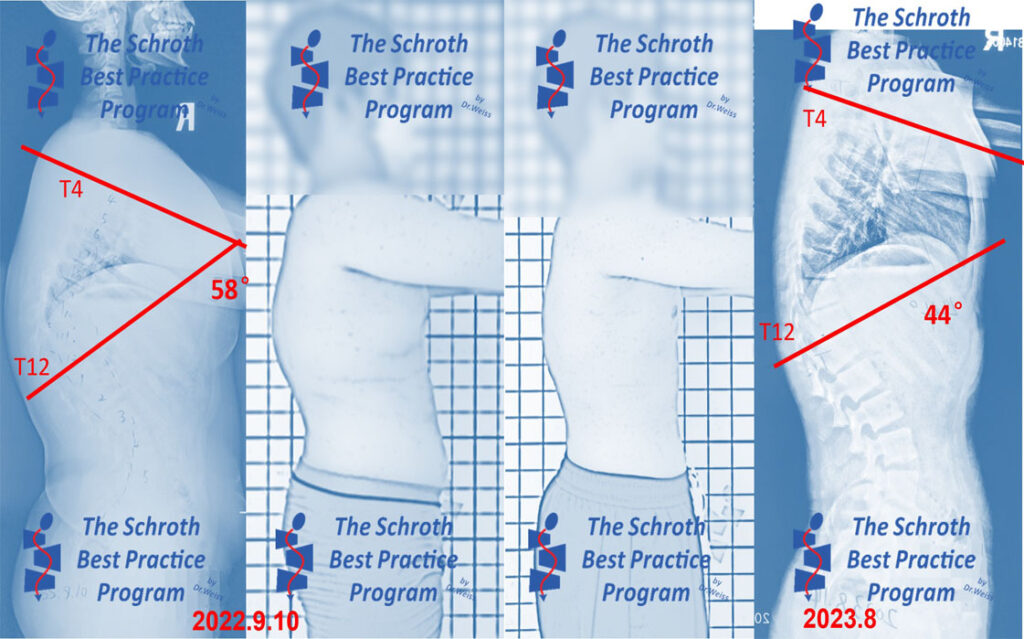
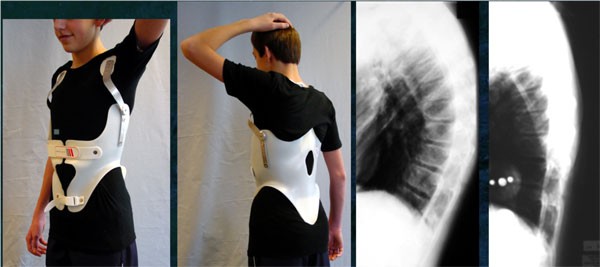

Kyphosis refers to a condition where the spine appears rounded in the thoracic area when viewed from the side. Typically, Cobb angle measurements in the sagittal plane range from 20-45º in the thoracic spine, with anything above 45º termed hyperkyphosis.
Kyphosis may occur alone or with scoliosis, known as kyphoscoliosis, and is more prevalent in men. While some cases are postural and can be improved with conscious posture correction, Scheuermann’s disease represents a severe form of structural kyphosis due to vertebral deformation.
Scheuermann’s disease results from anterior wedging of vertebrae, often in the thoracic spine, causing a rigid apex curve. Severe cases, with curves of 75º or more, may lead to discomfort and increased pressure on internal organs, potentially requiring surgical intervention.
For kyphosis patients, we offer non-surgical treatment options, including customized Physio Link programs and the Kyphologic Brace®. Patients with thoracolumbar/lumbar kyphosis, particularly adults, may benefit from Physio Link exercises and/or a Physiologic Brace®. These interventions aim to reduce kyphosis angles and improve overall spinal health.

